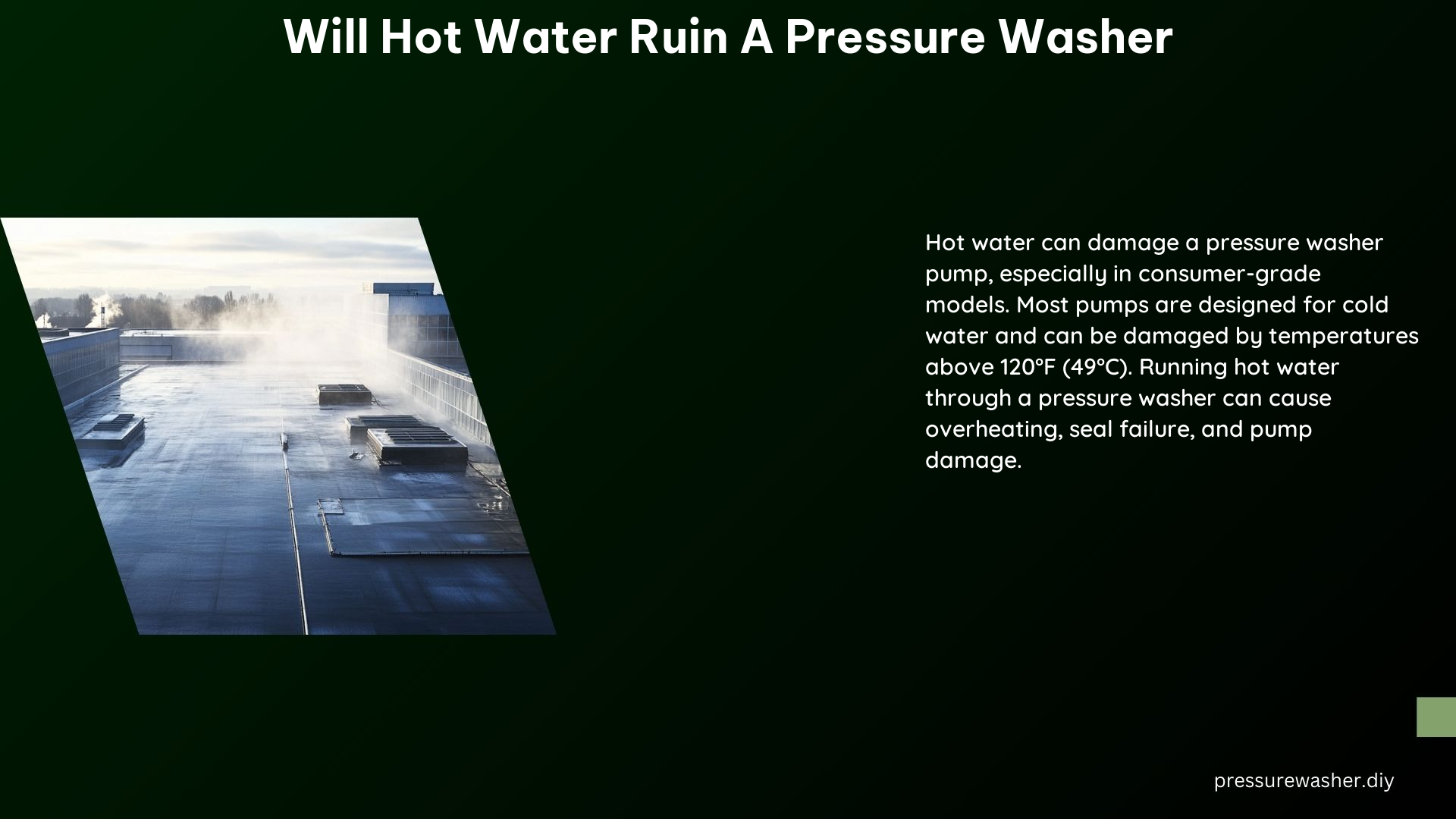Running hot water through a pressure washer can be a risky proposition, potentially leading to significant damage to the pump and other critical components. As an expert on the topic, I’ll provide you with a comprehensive guide on the technical specifications, risks, and safety precautions to consider when using hot water with your pressure washer.
Technical Specifications and Risks
-
Pump Overheating: The primary concern with using hot water in a pressure washer is the potential for the pump to overheat. Pressure washer pumps are typically designed to operate with cold water, which helps to dissipate heat and keep the pump cool. When exposed to hot water, the pump can experience premature wear, damage, or even complete failure. The maximum inlet temperature for most pressure washer pumps is around 185°F (85°C) for triplex pumps and 140°F (60°C) for axial pumps.
-
Seal Damage: The seals within the pressure washer pump are also susceptible to damage when exposed to hot water. These seals are typically designed to withstand the pressure and temperature of cold water, but the higher temperatures of hot water can cause them to deteriorate, leading to leaks and further damage to the pump.
-
Cooling System Compromise: Pressure washers rely on a cooling system that uses the incoming cold water to dissipate heat generated by the pump and engine. When hot water is used, this cooling system can be compromised, leading to overheating and potential damage to the pressure washer’s components.
-
Temperature Ratings: It’s important to note that different pressure washer pumps have varying temperature ratings. Triplex pumps, which are commonly used in commercial and industrial pressure washers, are typically rated for a maximum inlet temperature of 185°F (85°C). Axial pumps, which are more common in homeowner-grade pressure washers, are generally rated for a lower maximum inlet temperature of 140°F (60°C).
-
Engine Heat Transfer: In gas-powered pressure washers, the engine can transfer heat to the pump housing, further increasing the pump’s operating temperature. This heat transfer can be mitigated by using a belt-driven pump setup, which helps to isolate the pump from the engine’s heat.
Safety Precautions and Alternatives
-
Check the Manual: Before attempting to use hot water with your pressure washer, always consult the manufacturer’s user manual for specific guidance and recommendations. The manual will provide the necessary information on the maximum inlet temperature and any other safety precautions you should take.
-
Use a Hot Water Pressure Washer: If you regularly need to use hot water for your cleaning tasks, consider investing in a dedicated hot water pressure washer. These specialized units are designed to handle higher water temperatures and often feature additional cooling mechanisms to prevent overheating.
-
Use a Relief Valve: Some pressure washers come equipped with a relief valve that can help prevent overheating by releasing excess water when the system reaches a certain temperature. This can provide an additional layer of protection against pump damage.
-
Turn Off the Water Heater: If possible, turn off your residential water heater while using hot water with your pressure washer. This will help ensure that the water temperature remains within the safe operating range for your pressure washer’s pump and components.
By following these safety precautions and considering the technical specifications and risks, you can minimize the chances of damaging your pressure washer when using hot water. Remember, it’s always better to err on the side of caution and use cold water whenever possible to protect the longevity and performance of your pressure washer.

